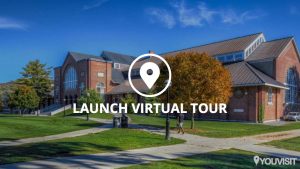In the college admissions world, March and April mark the time when the ball is passed from colleges choosing a class to students deciding where to attend. On the surface, this is a great time to be a student. They no longer have to wait on the edge of their seats for decisions and they take back the power. But having too many choices can also be harder than expected. Students may not know which school is the best fit, or how to measure what one college offers versus another. In a normal year, it’s tough for many to make a decision on where to attend. And this is anything but a normal year.
Remember that this is a weird time for colleges too. For virtually every year until this year, they have invited admitted students and parents to campus for open houses and visit days. They have mounted panels, served food, opened up classrooms and provided staff and students to answer questions. Now April programming is canceled and so is open visitation to most campuses. Colleges are having to rethink (without too much lead time) how to give students a feel for campus life even if they can’t leave their living rooms. They know that the stakes are high for students. Many may have to make a decision and put down a deposit without having ever set foot on their campus of choice. Families may feel like they are “depositing blind.”
Now April programming is canceled and so is open visitation to most campuses. Colleges are having to rethink (without too much lead time) how to give students a feel for campus life even if they can’t leave their living rooms. They know that the stakes are high for students. Many may have to make a decision and put down a deposit without having ever set foot on their campus of choice. Families may feel like they are “depositing blind.”
The good news is that many colleges are doing everything they can to reach students virtually. They want you to learn about what they have to offer, and many are trying to roll out the proverbial red carpet on their websites and other platforms.
Here are different ways to learn about colleges, even if you can’t visit:
Keep opening email. Theverybest thing for accepted students to do is to look for updates from colleges. What are the colleges offering in place of on-campus visits? Many are live-streaming student panels or classes and producing new or curating existing video content. Some colleges may be offering more specialized online feeds or videos designed for accepted students, so it will feel more relevant than just searching online. Keep a schedule of when and where online programming may be happening so that you don’t anything!
 Take a virtual tour. Many colleges already have virtual tours which you can access on their admissions pages or on YouTube. The tours give you a feel for the layout of campus and also usually give you some background on programs and the student experience. Some colleges even offer a variety of tours with each one focused on a particular area of student life, like athletics or the arts.
Take a virtual tour. Many colleges already have virtual tours which you can access on their admissions pages or on YouTube. The tours give you a feel for the layout of campus and also usually give you some background on programs and the student experience. Some colleges even offer a variety of tours with each one focused on a particular area of student life, like athletics or the arts.
Talk to alumni. One of the best ways to understand the “feeling” of being on campus is to talk to current students or recent alumni. Sometimes, admissions offices will be able to match you with a student so that you can connect online and ask all of your questions. You also might be one or two degrees separated from an alum. Think about who you know and shoot them a text or put out a request on social media to see if anyone has a friend of a friend who would be willing to chat about their college experience.
Visit academic department pages. You might have looked at academic department pages back when you were first looking at colleges, but don’t assume you remember everything. If you are planning on majoring in political science, check out the list of courses you would be taking.
What other resources or programs does the department offer?
Check out the YouTube channel. Most colleges have YouTube channels and often the admissions office hosts its own. Depending on what’s posted on the YouTube pages, you can hear from professors and students, see images of campus and learn more about everything from dining options to campus traditions. You may be able to listen to the school band or see an exhibit from current visual arts majors. Videos capture the energy of a campus better than text and photos on a website.
 Follow social media. If you haven’t done so yet, start following the social media feeds of your colleges. Social media gives a sense of the conversations happening on campus in real time. Because students are not currently on campus, look back at the feed from earlier in the year to get a better representation of the vibe when school is in session. Also, many colleges set up accepted student social media accounts. Be sure to join to meet other accepted students and join in with the conversation!
Follow social media. If you haven’t done so yet, start following the social media feeds of your colleges. Social media gives a sense of the conversations happening on campus in real time. Because students are not currently on campus, look back at the feed from earlier in the year to get a better representation of the vibe when school is in session. Also, many colleges set up accepted student social media accounts. Be sure to join to meet other accepted students and join in with the conversation!
Read blogs and the newspaper. Like social media, blogs and the online paper give you a sense of the values of a campus and the current conversations. Search for the newspaper and check out the admissions page to find blogs of current students or staff. Interested in creative writing or photography? See if there is an online lit mag that you can peruse.
Set up a conversation with financial aid. Families may not be able to meet with the financial aid office in person, but many are still taking phone or Skype calls. If you have a question about your financial aid package, see if you can speak with someone in financial aid. Be patient if it takes a little while to get back to you; remember that many other families are calling in with questions too.
Check out student review sites. Want to get some unfiltered opinions about a particular college? Sites like Niche and Campus Reel compile student reviews independent of the college leadership. Niche is much like Yelp with students giving grades and reviews on everything from Campus Safety to the Party Scene. College Reel hosts videos by students talking about daily life and answering questions.  These can give a different perspective than you are likely to find on a college’s website. But remember that the reviews are opinions—just because one student feels a particular way doesn’t mean that every student does. Look at the reviews as a whole; don’t rule a college out just because one student was having a bad day.
These can give a different perspective than you are likely to find on a college’s website. But remember that the reviews are opinions—just because one student feels a particular way doesn’t mean that every student does. Look at the reviews as a whole; don’t rule a college out just because one student was having a bad day.
Consider the location. Remember that when you choose a college you aren’t only choosing a campus. You are also choosing a surrounding neighborhood and community. While you may not be able to visit right now, look at the areas around the campus perimeter. Are there places students go for pizza or coffee? Is there a bustling college town? Is there access to a city – how long does it take to get there? You can expect that colleges in more remote areas have programming mostly on campus, but more urban schools might have a culture where students spend more of their time away from campus. So, be sure to investigate the surrounding neighborhood and city life.
Have a specific question? You can also reach out directly to admissions offices; they are very willing to help and are trying to give you the information you need to make an informed decsion. One caveat: It’s a crazy time of year for them, so if there’s a delay in getting back to you, don’t assume that they don’t care about connecting. Be patient and allow for some lag time; the offices might be overwhelmed by requests and not all of them are even fully staffed right now. Although it wasn’t how you expected to make your decision, experiencing a college online can never replace actually being on campus, but it can still give you much more information than you would expect!

